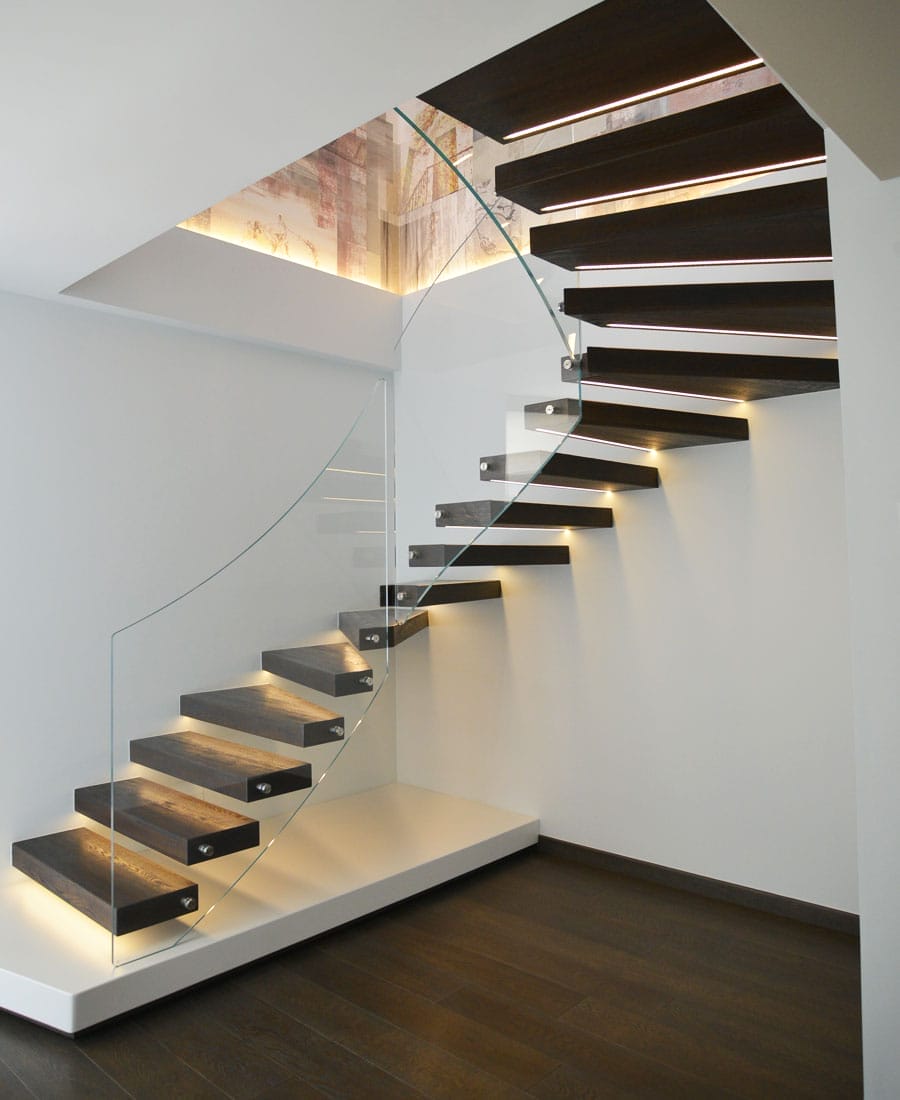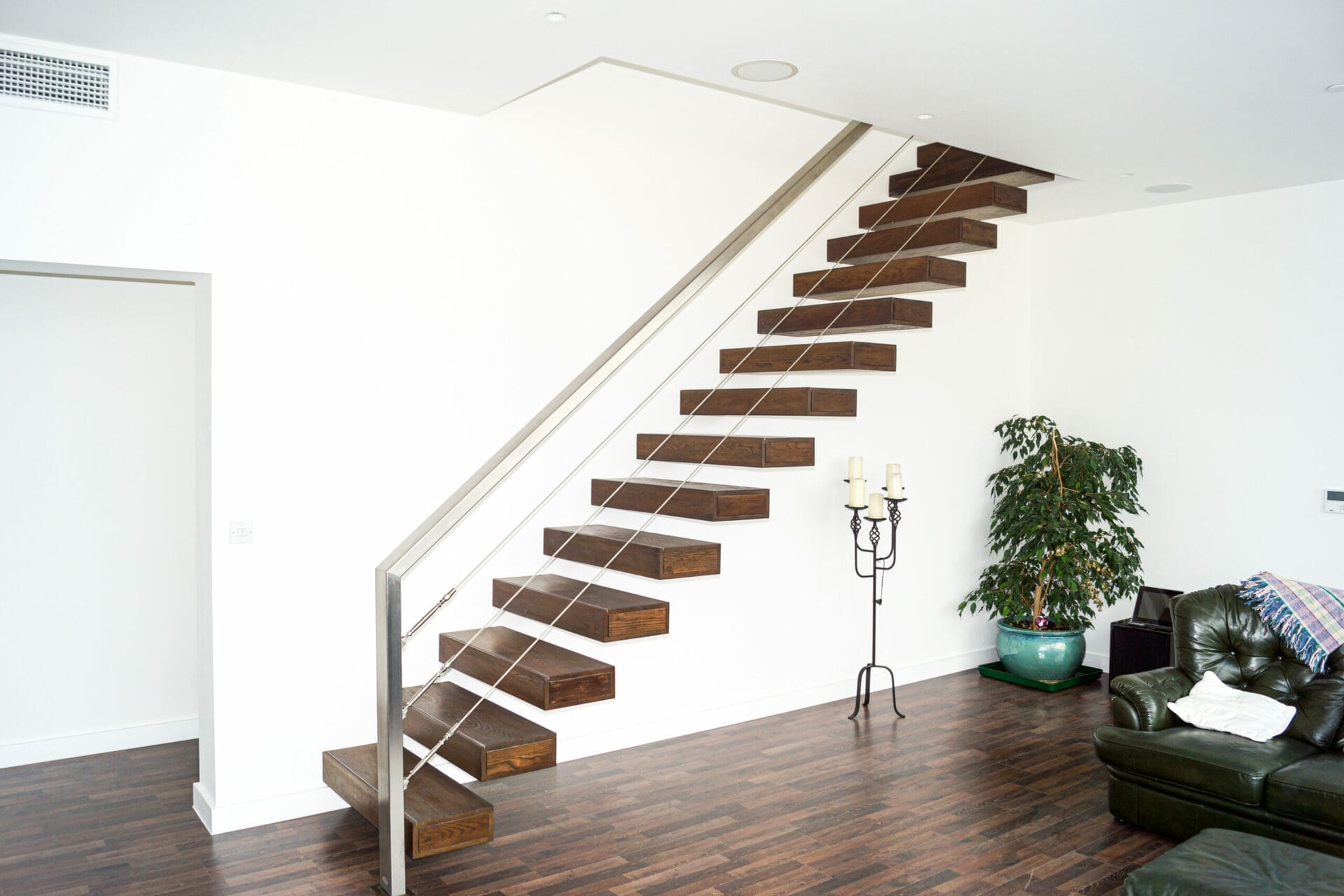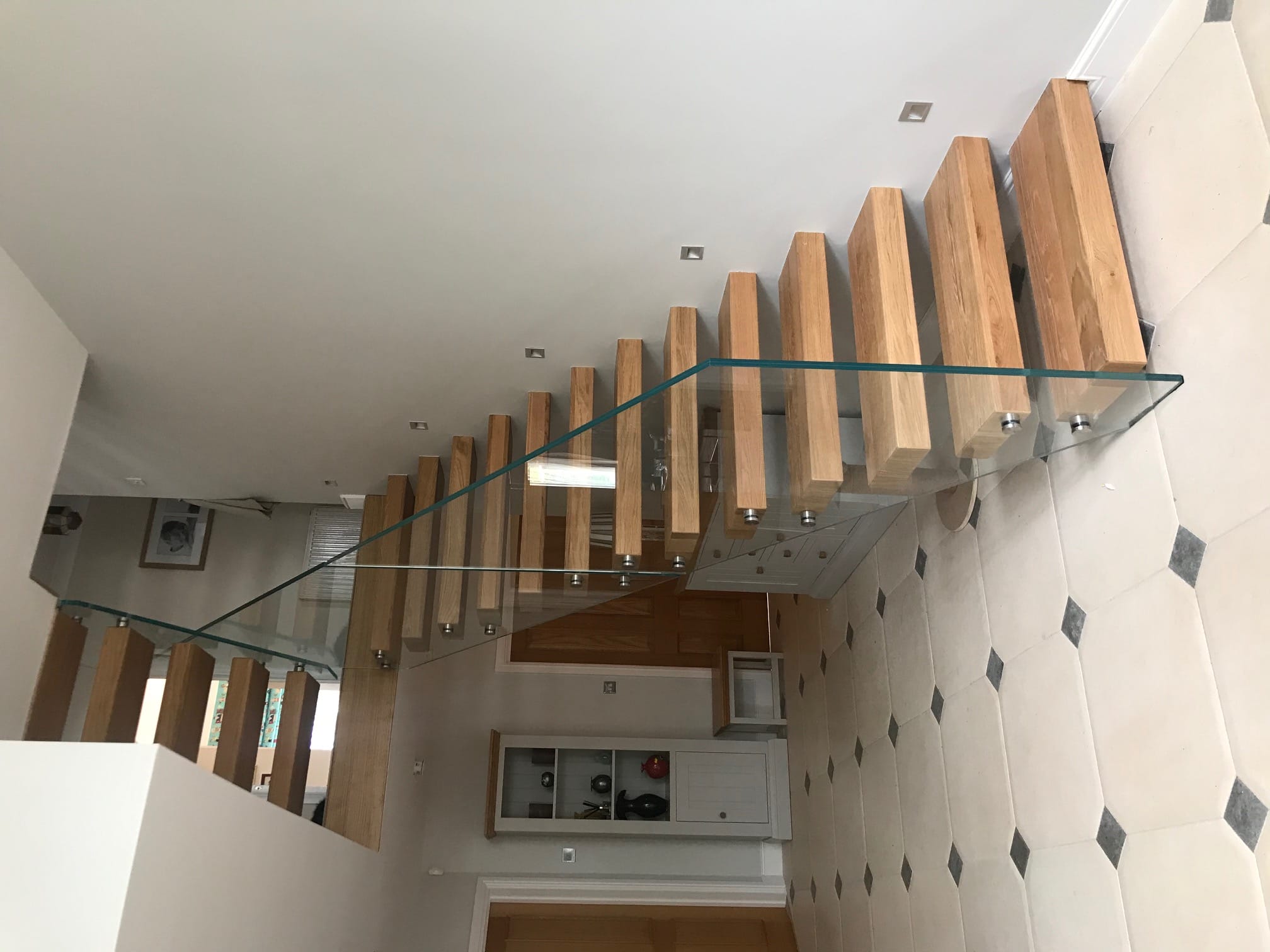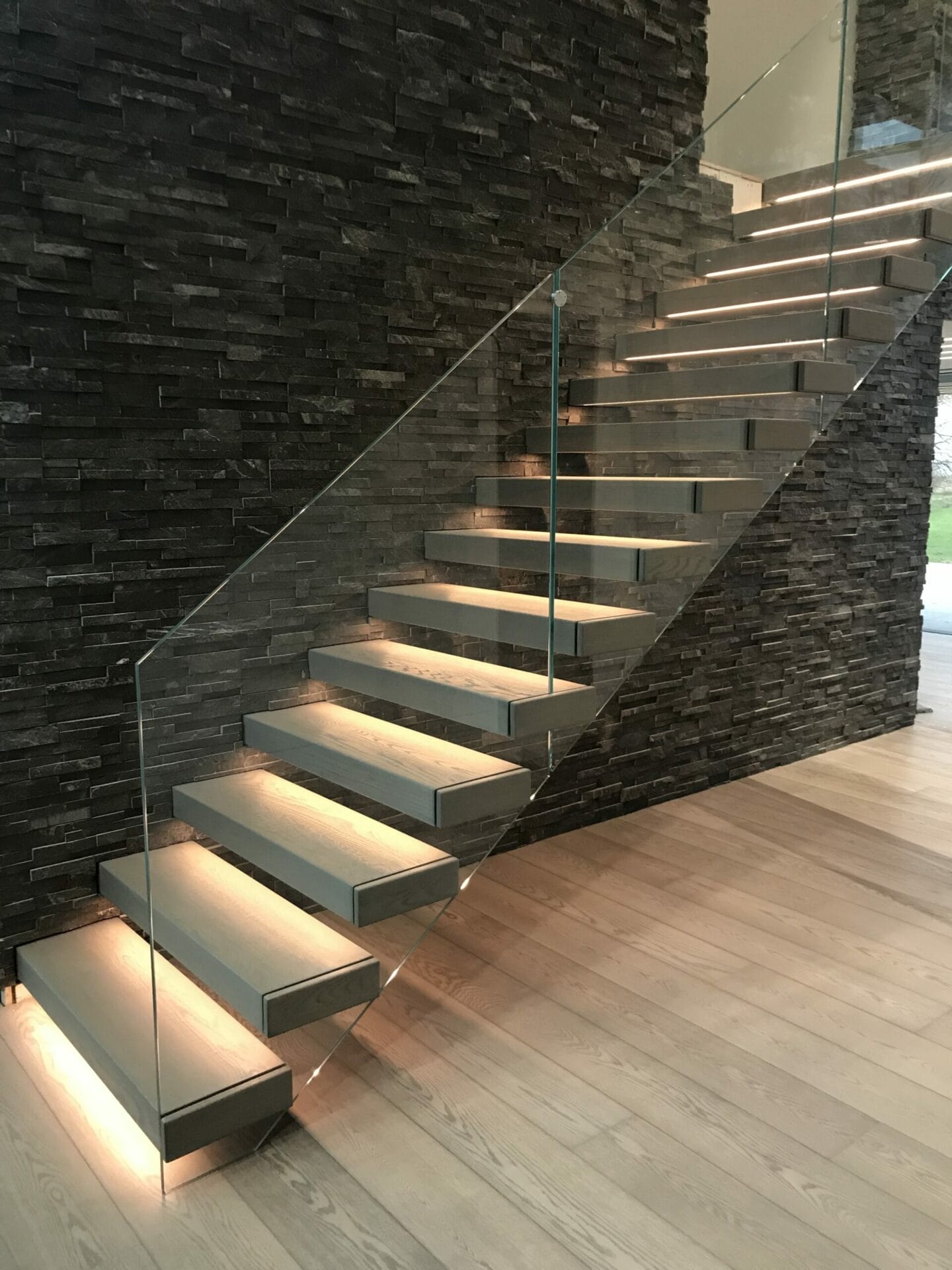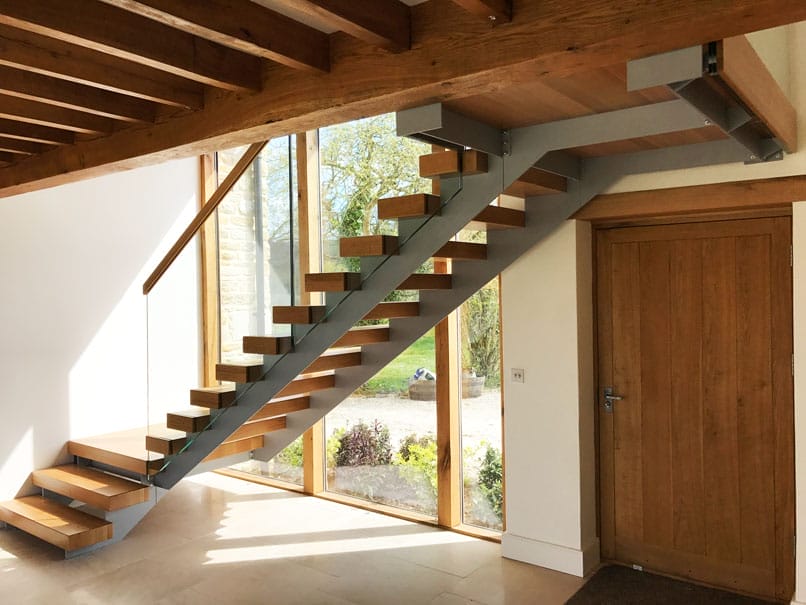Creative solutions That Float
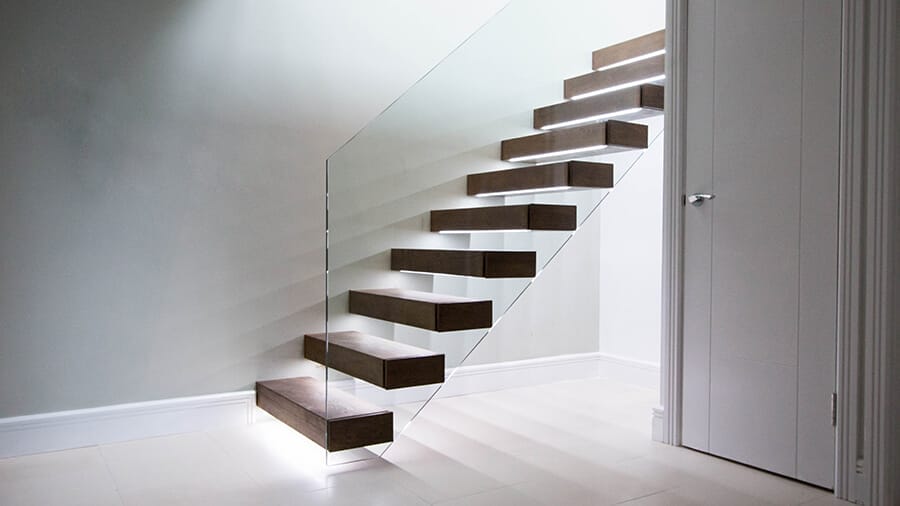
Floating stairs, also known as cantilevered stairs,
are a type of staircase that appears to defy gravity by seemingly suspending in mid-air with no visible means of support. These striking and unique stairs have become popular in modern and contemporary architecture, adding a sophisticated and elegant touch to any space.
One of the defining characteristics of floating stairs is the absence of visible support structures. This is achieved through the use of a cantilever design, where the stairs are supported by hidden structural elements that are attached to the wall or floor behind the stairs. These hidden supports are critical to the structural integrity of the stairs and must be carefully calculated and designed to ensure that the stairs are safe and stable.
In addition to their lack of visible supports, floating stairs are also distinguished by their minimalist design. Unlike traditional staircases, which often feature ornate balustrades and other decorative elements, floating stairs have a simple and uncluttered appearance. The steps, or treads, are typically made of wood, glass, or other materials that are sleek and modern in appearance, and the handrail is often a simple, slender rod or tube, or sometimes there is no handrail at all. This minimalist design helps to create a sense of open space and lightness, making the stairs appear almost weightless.
Cantilevered stairs can be constructed using a variety of materials, including wood, metal, and glass. The choice of material will depend on the specific design and style of the staircase, as well as the requirements of the building. For example, a glass cantilever staircase may be used to create a transparent and open feeling in a space, while a metal cantilever staircase may be chosen for its durability and strength.
In addition to straight floating stairs, it is also possible to design and build floating curved stairs. These stairs can add a graceful and elegant touch to a building and can be constructed using the same cantilever design as straight floating stairs. It is important to note that the construction of curved floating stairs is typically even more complex than that of consecutive stairs, due to the additional structural challenges posed by the curved design.
Floating stairs are not only aesthetically pleasing, but they can also be a practical solution in buildings where space is limited. Because they do not require a traditional support structure, they take up less floor space than traditional staircases, making them an ideal choice in areas where every square inch counts.
In the United Kingdom and worldwide, floating stairs have gained popularity in both residential and commercial buildings. From spacious modern homes to chic boutique hotels, cantilevered stairs can be found in a wide range of settings.
Overall, floating stairs are a visually striking and unique type of staircase that can add a touch of sophistication and elegance to any space. While they may be more complex to design and build than traditional stairs, the result is a stunning and one-of-a-kind feature that is sure to impress.
Looking to add a touch of luxury to your home?
Consider floating stairs! These stylish staircases (often referred to as cantilever stairs) are built of high-quality materials like oak, glass, or metal and appear to float freely from the wall and floor. Not only do they provide a safe and convenient way to move between floors, but they also make a dramatic design statement.
Bring Light into your Hallway
Floating stairs are a magnificent design element that can be used to open up and brighten even the tiniest and dingiest of entrances and stairways. With a sleeper tread cantilever design, your staircase can do more than just transport you from one floor to another – it can also create an eye-catching wow factor for your home.
Project Managed for you.
At Paradigm Stairs, our professional project managers will work with you to ensure your cantilever staircase system is strong and durable. Our hidden, metal reinforcement is embedded in the walls and attaches to the stair treads, providing discreet support while working seamlessly with the surrounding supporting structures in walls and floors. The visible components like oak sleeper treads and toughened laminate glass panels also contribute to a strong and durable staircase that appears to float. Whether you choose wood, a glass balustrade or a stainless steel metal staircase, you can mix and match staircase design styles and finishes to compliment or contrast with your décor, depending on the look that you want to achieve. Cantilever staircases are more cost-effective when installed by professional professionals like us.
Commercial Or Residential
Floating stairs constructions can be used for commercial or residential projects. Unfortunately, it is not possible to build real floating indoor staircases. But with attention to detail and precise planning, it is possible to create the illusion of a floating stair.
See Our Work
Take a look at some of the projects we have created for our customers. You may see the glass balustrade which is a popular choice and also the LED Stair Lights which cast a glow on the treads below and create a stunning floating visual effect.
Frequently asked questions regarding Floating Stairs
Floating stairs, also known as cantilever stairs, are a type of staircase that appears to be suspended in mid-air, with no visible means of support. They are supported by hidden structural elements that are attached to the wall or floor behind the stairs.
The key features of floating stairs include the lack of visible support structures, a minimalist design, and the use of specialized engineering techniques and materials in the hidden components of their construction.
Floating stairs are popular in modern architecture because of their unique and eye-catching appearance. They can add a touch of sophistication and elegance to any space, and can be a practical solution in buildings where space is limited.
Yes, floating stairs are safe if they are designed and built correctly. They must be constructed using strong and durable materials, and must be properly supported by hidden structural elements in order to ensure their stability and safety.
Yes, floating stairs can be used in residential homes. They are becoming increasingly popular in residential architecture, thanks to their unique and stylish appearance. However, it is important to consult with a professional architect or builder to ensure that the stairs are designed and built in a way that is safe and compliant with building regulations.

